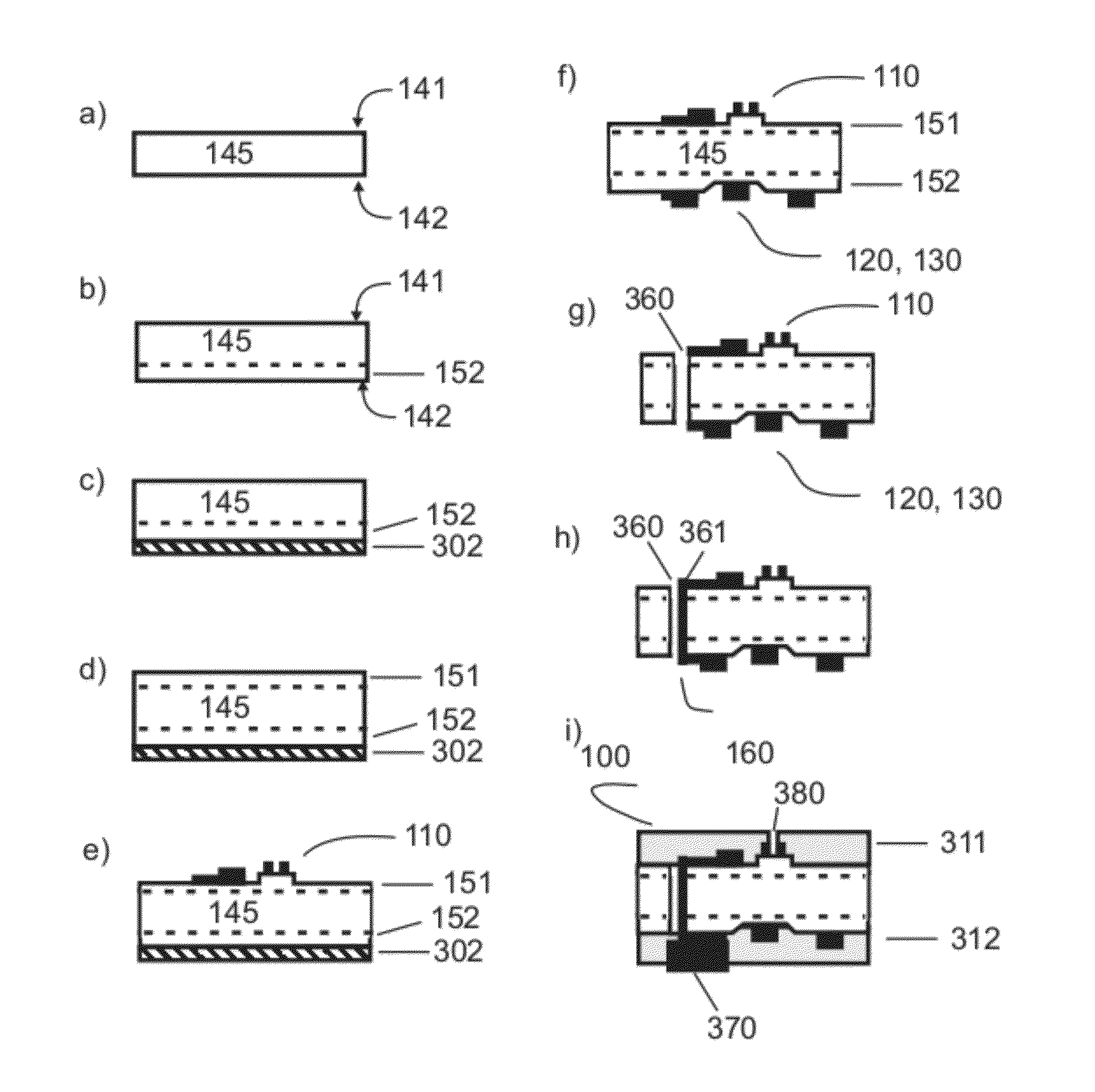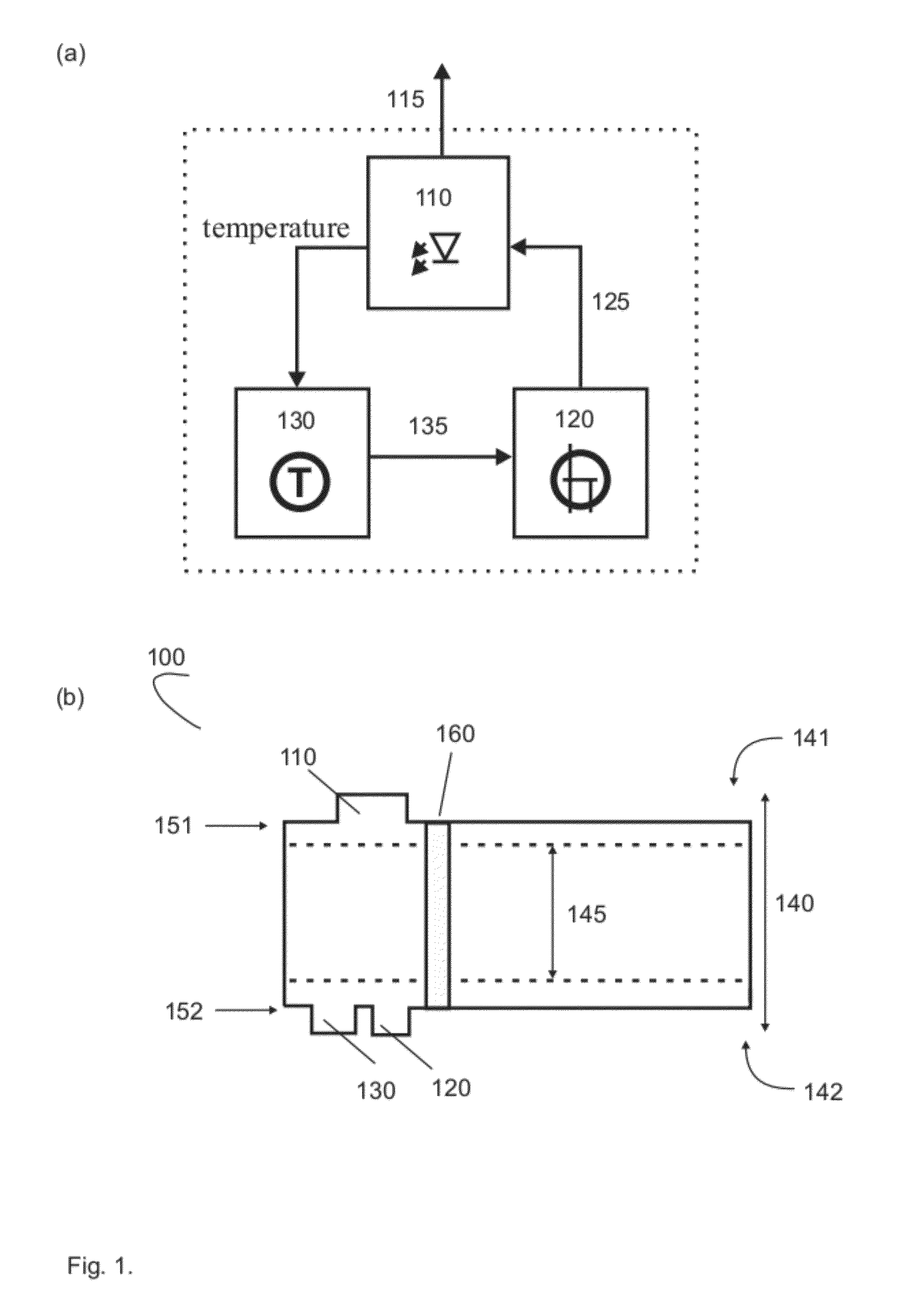Double-sided monolithically integrated optoelectronic module with temperature compensation
a monolithic integrated, optoelectronic module technology, applied in the direction of lasers, electrical equipment, basic electric elements, etc., can solve the problems of difficult integration of monolithically the diode laser and the driver circuitry, the formation of fet-based driver circuitry on top of the diode laser layer is impossible, and the integration of iii-v optoelectronic components with cmos-based silicon electronics is complicated and other problems, to achiev
- Summary
- Abstract
- Description
- Claims
- Application Information
AI Technical Summary
Benefits of technology
Problems solved by technology
Method used
Image
Examples
Embodiment Construction
[0064]A double-sided monolithically integrated optoelectronic module (100) according to a preferred embodiment of the present invention is illustrated in FIG. 1. FIG. 1(a) illustrates the operation and a temperature compensation method of the module and FIG. 1(b) illustrates a monolithically integrated structure of the module according to one embodiment of the present invention.
[0065]The optoelectronic module (100) includes at least two parts: a driver circuitry (120) and a diode laser (110). The driver circuitry (120) produces a drive electrical signal (125) supplied to the diode laser (110), and the diode laser (110) produces an optical output (115) in response to the drive electrical signal (125).
[0066]In a preferred embodiment, the module also further includes a temperature-sensitive element (130). The temperature-sensitive element (130) is preferably fabricated in thermal contact with the diode laser (110). This means that the temperature-sensitive element is capable of produci...
PUM
 Login to View More
Login to View More Abstract
Description
Claims
Application Information
 Login to View More
Login to View More - R&D
- Intellectual Property
- Life Sciences
- Materials
- Tech Scout
- Unparalleled Data Quality
- Higher Quality Content
- 60% Fewer Hallucinations
Browse by: Latest US Patents, China's latest patents, Technical Efficacy Thesaurus, Application Domain, Technology Topic, Popular Technical Reports.
© 2025 PatSnap. All rights reserved.Legal|Privacy policy|Modern Slavery Act Transparency Statement|Sitemap|About US| Contact US: help@patsnap.com



